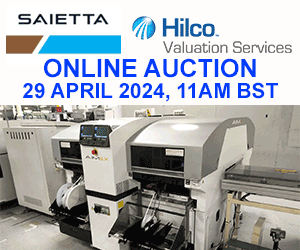From the Publisher: EMSNOW On Tour – Some Observations Part One

By Eric Miscoll, Publisher EMSNOW

Eric Miscoll
At the end of 2021, I left EMSNOW’s Dallas headquarters to embark on a fascinating three-week tour, arranged by Dieter Weiss, founder of in4ma research. We planned an ambitious schedule that included presentations at an industry event, podcast episodes, meetings with EMS executives and tours of some European manufacturing facilities. After nearly two years stuck in my home office squinting at my computer screens it was truly rewarding to be meeting with people in person again.
Not counting my flight from the states, we travelled 3,136 KM, touched six countries, and toured thirteen facilities. We tested for Covid nine times (always negative) and wore masks everywhere.
I am truly grateful to Dieter for his hospitality and for making the arrangements, which involved five hotels and opening his magnificent home to serve as our operations base camp.
To hear about the tour firsthand, please do listen to our podcasts.
After spending some time at home reflecting on our experiences, here are some things I learned.
Material supply chain challenges are still #1 headache
Across the board, the difficulties finding the parts for customer BOMs is still the biggest challenge the industry is experiencing. The shortages are not just of semiconductors, but also metals and plastics. All the companies we spoke to are suffering from this; many complained they would be producing more products / revenue if they only had the parts.
War for Talent

Eric Miscoll and Dieter Weiss discussing the European EMS industry.
Finding skilled workers is the second major issue mentioned by the companies we spoke to. We heard reports on remedies including importing workers from other countries. These imported workers must be trained, and often taught the local language, adding cost and time to the on-boarding process. The use of apprentice programs is also very common with the companies hiring most of the apprentices at the conclusion of the program. Labor challenges are part of the fabric of the EMS industry and importing workers has been a common practice before. This also underlies the drive for increased automation in the industry and less labor-intensive manufacturing.
Industry consolidation / M&A
European EMS consolidation activity reminds me of what began in North America over 10 years ago and continues today. There is a recognition that size matters, so the drive to get bigger is definitely on in Europe. It is a very active environment with lots of discussions. Three companies we met with have even purchased or are planning to buy a smaller EMS in the U.S. to expand into that market.
OEM trends
Three trends were mentioned in our meetings: OEMs are outsourcing more than ever, and not just PCBA. According to in4ma research, 62% of the Total Available Market (TAM) for the industry is still held within the OEM, representing a growth opportunity for EMS. Box build and final integration are services that OEMs are considering for outsourcing.
Another trend we heard about is OEMs developing an EMS division to sell their excess capacity.
Thirdly, we see OEMs divesting facilities, as happened in the U.S. a decade or so ago. This is a way for EMS companies to acquire capacity. This happened last year when German lighting solutions company Osram announced it was selling its plant for production of digital lighting components in the Bulgarian city of Plovdiv to Sanmina Corp.
EMS in Europe is very focused on serving current customers well and growing the business

Supply chain security is an issue of growing OEM concern
EMS companies are responding to an increasing OEM concern about supply chain security. The disruptions of the past two years have convinced many OEMS that they must shorten their supply chains and build products closer to their end customers. Reshoring and regionalization are reactions to this impulse. Most companies had stories about getting new programs as a result.
OEMs are driving more business out of China that isn’t for the Chinese customer. The EMS that have China facilities use them to build products for that market. For example, one EMS cited 90% of what is built in China is for local customers.
Shifting programs from one region to another takes time: from 6 months to well over a year we were told. OEMs that are planning to move should be initiating and planning for this now. Some are moving from China to Malaysia, Viet Nam, India, and Indonesia, and the EMS with facilities in those countries are benefiting.
Explosion of applications for electronics
Electronics is more ubiquitous in our lives and the products we saw at the facilities we visited reflected this reality. We saw many innovations including lighting and illuminations on vehicles and the application of sensors to an expanding number of everyday touchpoints: doors, lighting, and even toilets.
While industrial electronics is the primary industry sector in Europe right now, automotive, medical and agricultural electronics (the ‘Internet of Tomatoes’) are also major growth areas.
Watch for Part Two of Eric’s report coming next week.












